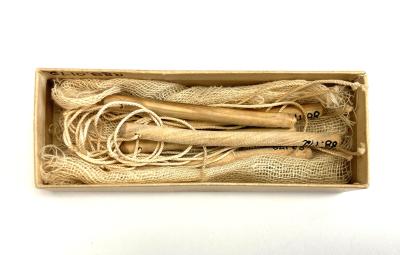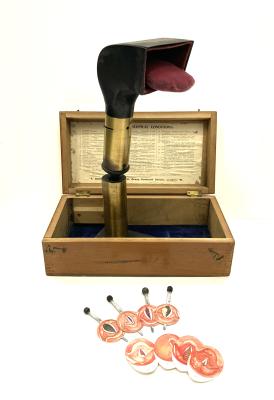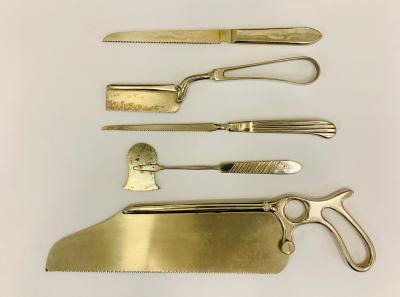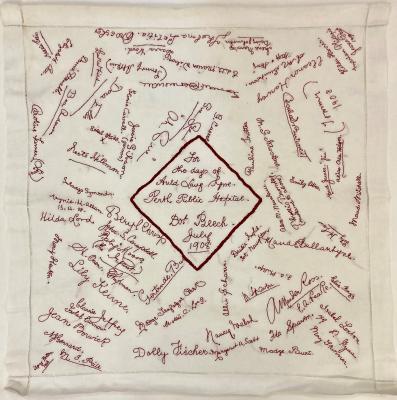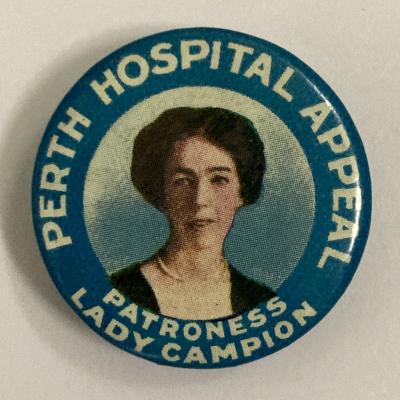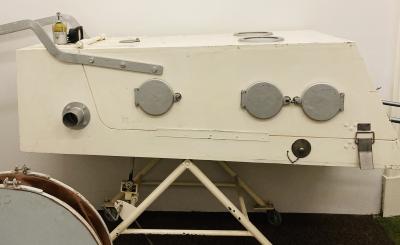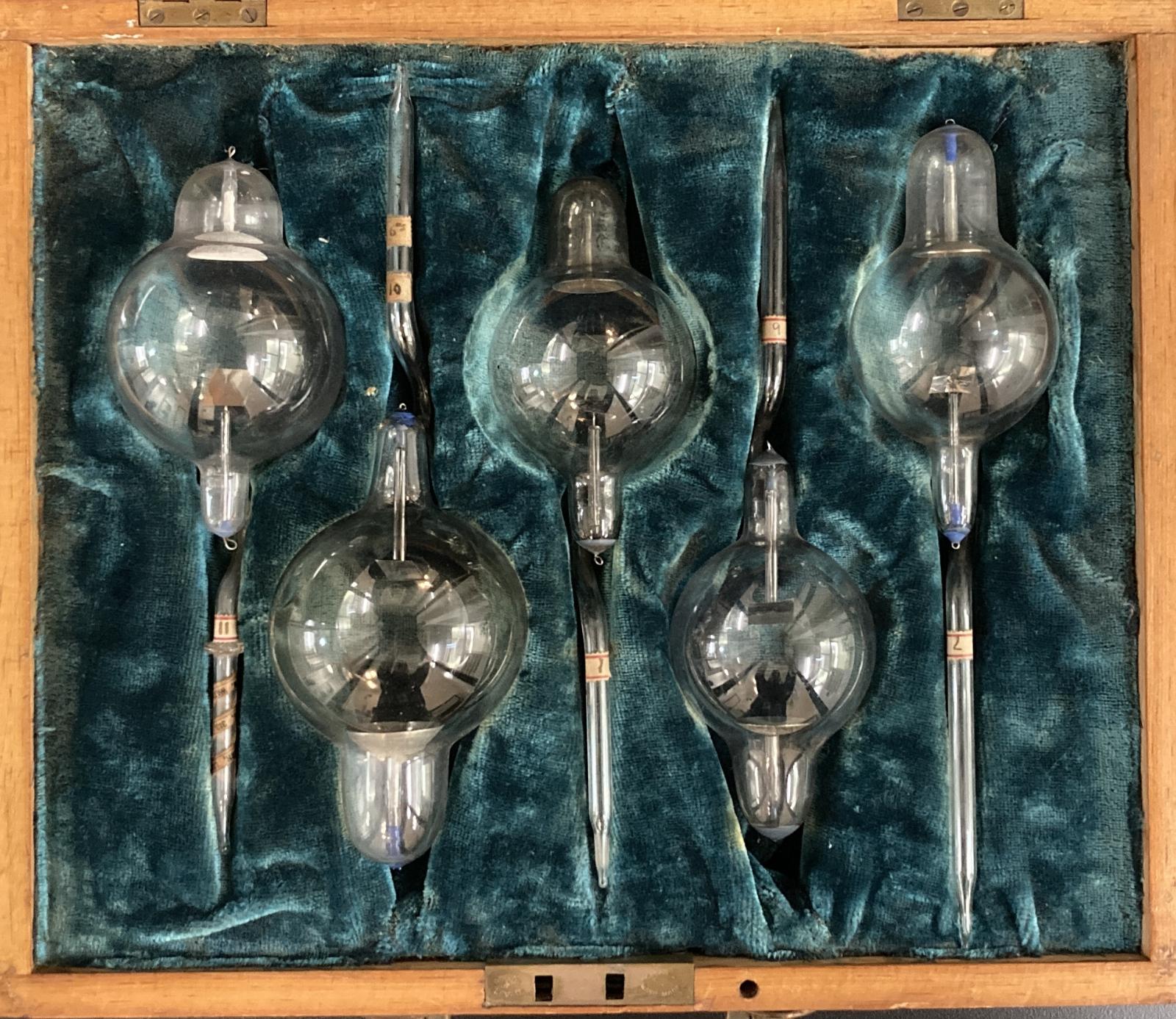XRAY TUBES
c. 1896Five Jackson tubes (or focus tubes) in a hinged wooden case with a small fold-out brass handle and brass fittings. A hand-written paper label attached to the outer lid of the case reads: 'W.J.Hancock'. Another hand-written paper label attached to the side of the lid reads: 'Xray tubes. Open box in flat position only'. 'V60' is painted in the corner of the lid. The inside of the case is lined with green velvet fabric with indents to protect the Xray tubes.
The tubes are bulbous shaped glass, each with a glass tube fitted at one end through which the entire tube is evacuated and sealed. Each tube contains two electrodes sealed into opposite ends of the bulb. The cathode electrode at one end (the electrode from which electricity flows) has a concave shape to focus the rays on to a metal target. The target is connected to the cathode and is tilted so that emerging rays are not blocked by the cathode. Tube (a) is labelled 'W.Watson and Son, 313 High Holborn London'. This cathode is covered with precipitate. The remaining four tubes (b-d) are stamped 'Newton and Co, 3 Fleet St. London/1/10/9/7/'. The glass on all tubes is slightly discoloured. The key to the lock is missing.
Details
Details
A hand-written paper label attached to the outer lid of the case reads: 'W.J.Hancock'.
A hand-written paper label attached to the side of the lid reads: 'Xray tubes. Open box in flat position only'.
'V60' is painted in the corner of the lid.
William John Hancock was Western Australia's first radiographer. Born in Ireland in 1863, Hancock trained as an engineer and came to WA in 1885 or 1886 where he was the first Superintendent of Telephones. He brought the first Xray equipment to Perth in 1896, imported from London and purchased from his own funds.
Hancock was appointed Honorary Radiographer at Perth Hospital in 1898, a position he held for 22 years. The tubes were used at Perth Public Hospital from c1900 to 1920.
Like many scientists working in the field of radiology in the early days, Hancock was exposed to radiation and eventually died from radiation sickness.
These xray tubes are of historical, scientific and social significance. They were used by William John Hancock (b.1864 - d.1931) at Perth Public Hospital from c1900 - 1920 for the purpose of examining patients.
They are associated with the foundations of the field of medical imaging in Western Australia and Australia and, as such, are of national significance.
Xray was discovered in 1895-1896, making these tubes among the earliest in Australia.
The tubes have interpretive capacity for communicating the history of radiology locally, in Australia and worldwide.
